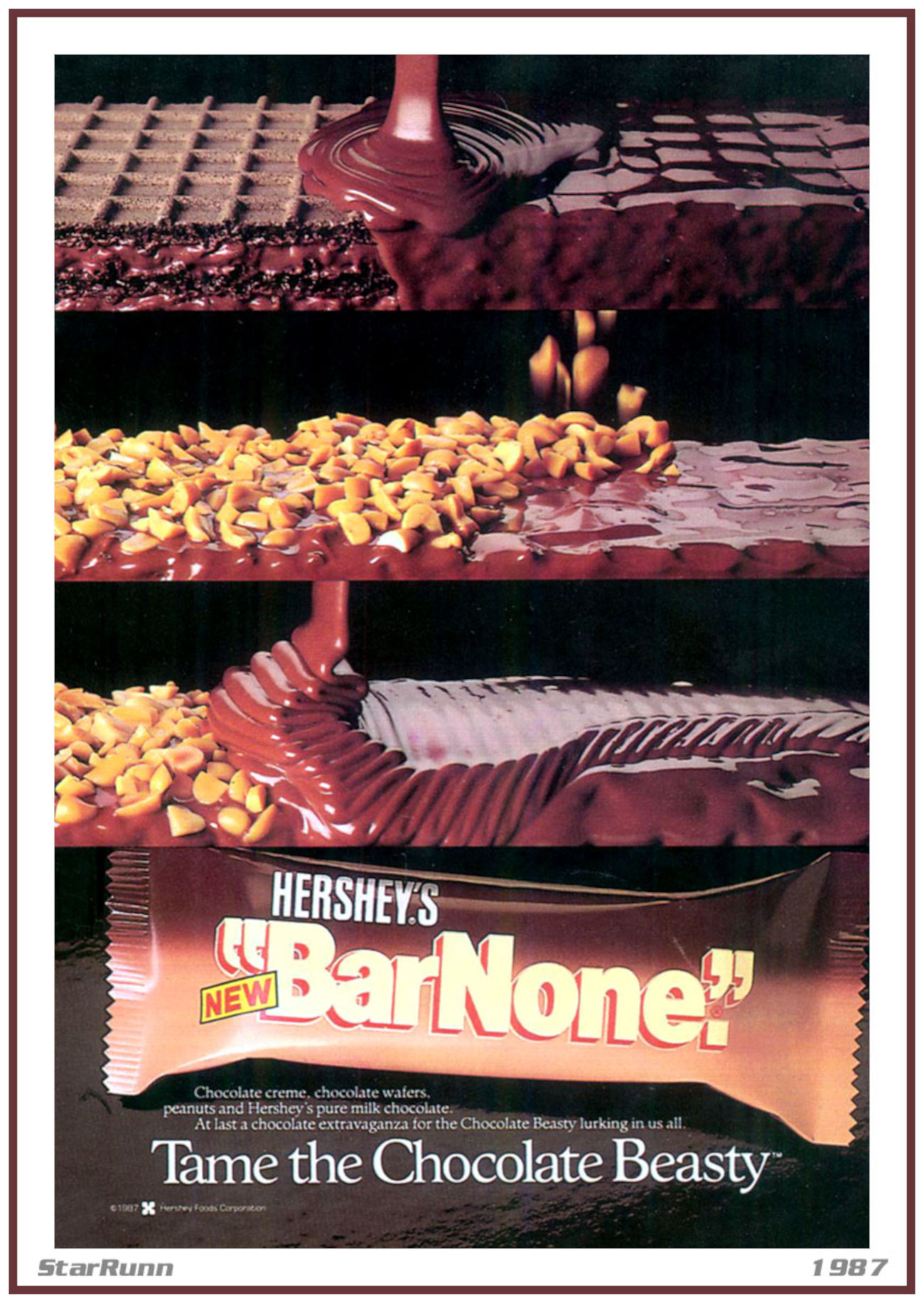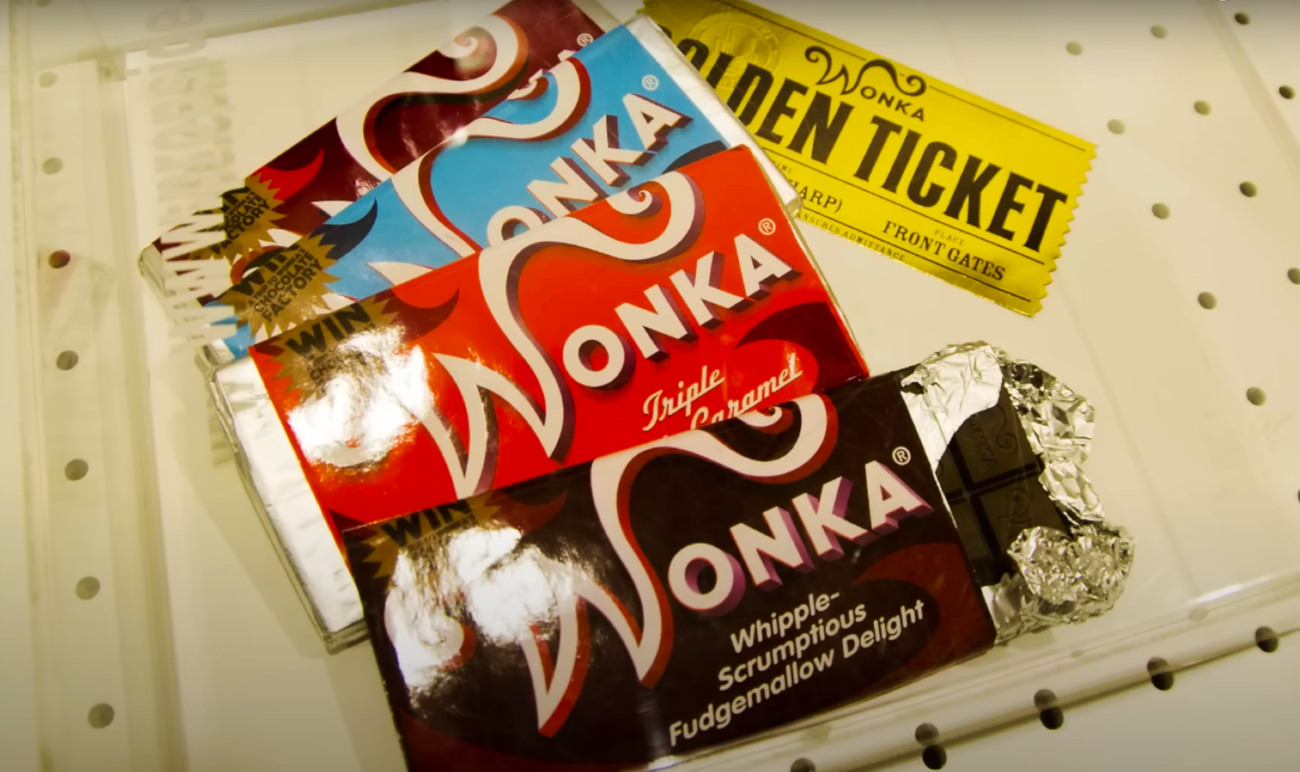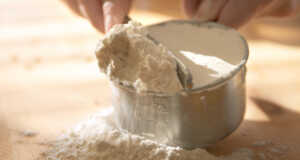When you think of your childhood, your brain immediately pulls up shows, music, clothes, and cars, yet nothing sticks stronger in a child’s mind than the candy bar. With a pow-worthy punch of sugar, candy bars are a universal baseline. Maybe it was something a family member gave you or something you secretly bought with spare change, but candy bars are simply a part of American childhood. However, not all of the candy bars of yesteryear are around. Here are just some of the candy bars that are discontinued, but need another chance on store shelves.
Curtiss Candy Company: Coconut Grove

We all know the Almond Joy and Mounds bars as the coconut and chocolate treat of America, but back in the day, there was another coconut candy on the block — Coconut Grove. The Chicago-based Curtiss Candy Company was founded in 1916 and created some well-known candies, like the Kandy Kake (now called the Baby Ruth) and the Butterfinger (which both are now produced by Nestle). Around 1949 Curtiss Candy Company came out with the Coconut Grove bar. The advertisements have the candy bar bursting onto the scene inside a coconut or in front of a perfect sea-salty ocean, screaming that it was a direct link to an island beach. Selling as a five-cent candy bar, it sold well as the coconut flavors paired well with the chocolate coating. The only problem is the coconut (unless probably sugared) could be prone to becoming stale. There’s not a lot of evidence around to figure out why the candy bar was discontinued. Whether production was by the Curtiss company or by Standard Brands in 1964, it’s hard to tell, but by the 1960s, the tropical treat was no more.
Peter Paul: Powerhouse

The Connecticut-based candy company Peter Paul, who first invented Almond Joys and Mounds, was also the creator of this chocolatey and caramel-y peanut treat — the Powerhouse. Made in the late 1960s, this classic candy bar trifecta was advertised to give you that extra push of energy that would get you through your day. Essentially, it was a candy bar precursor to today’s protein bar. Once the Peter Paul company was bought by Herhsey’s in the 1980s, production of the Powerhouse bar ended.
Sperry Candy Company: Chicken Dinner

Winner-winner chicken dinner has a completely different meaning when you consider this candy bar. Now at first glance, you might be thinking — wait — is there chicken in that chocolate bar? But rest assured, there’s none. This name was a marketing ploy that made a run-of-the-mill chocolate-covered peanut candy bar stand out from the rest. The candy bar was promoted with images of a roasted chicken dinner or images of a farm chicken. Sperry Candy Company even went as far as to make a Chicken Dinner truck as a promotional vehicle to sell this ten-cent candy bar. Chicken Dinner stayed on the market even during the Great Depression, which showed that it had true staying power. At the time of the candy bar’s release, hygienic diets (as promoted by Doctor Kellogg at the turn of the century) were in full swing, and with that came the popularity of the vegetarian diet. Peanut butter was among one the innovations promoted and popularized during the meat-less dietetic era. Kellogg’s health diet, in turn, increased the popularity of peanuts in all categories of food. At the time, the peanuts in Chicken Dinner were promoted as a healthy and fulfilling way to stay energized throughout the day. After the Sperry Candy Company was bought by Pearson’s, production of the Chicken Dinner immediately ended, ceasing its forty years of production.
Nestlé: Alpine White

Outside of Herhsey’s Zero candy bar — which was (and still is around) since the 1920s — there were very few white chocolate candy bars. When Nestle’s Alpine White hit the market in the mid-1980s, it used snow-capped mountains as its imagery to sell with an almond-studded white chocolate bar. The original commercial for the Alpine White candy bar epitomized 80’s suave chiseled models against a background of Maxfield Parrish’s 1920s paintings, all synced with smoothed synthesized tunes. This candy bar was short-lived and discontinued in 1993. There’s no exact reason as to why it was pulled, but when you consider that the 80s-early 90s was the peak time for low-fat or fat-free products, Alpine White (which was primarily cocoa fat, aka white chocolate) didn’t cut it. It’s hard to know if this candy bar would survive today’s dark-dark-dark chocolate craze, but it’s safe today that white chocolate and almonds are always a great duo, and the original 1986 commercial is quite extraordinary in its marketing and filming.
Hershey’s: Bar None

While Hershey’s has an archive of discontinued candies, one that flies under the radar is Hershey’s Bar None. Consisting of two chocolate wafers and a filling of chocolate cream and crushed peanuts, Bar None was similar in texture to the Kit Kat but had an appealing nutty taste and texture. Released in 1987 it was marketed as being a candy bar like no other, and there was nothing better (hence the name Bar None) to compete with it. Yet, despite the hyperbolic naming and marketing, Hershey’s decided to do some serious renovations to its creme-de-la-creme bar. In 1992, they split the bar in two and added a layer of caramel. After this decision, sales dropped off immediately. It then became a weird Twix-Kit Kat hybrid, but since it was a wafer cookie it wasn’t easy to eat. The chewy caramel did not match the crispy delicate wafer, probably making it hard to bite without ruining your hands and clothes with a sticky mess.
Pearson’s Candy: Seven Up

While our minds may all immediately think of the soft drink, Seven Up was a short-lived candy that for many, had a lasting impression. You couldn’t call this candy bar uninventive by any means. The candy bar had seven chambers (giving it its name), each packed with a different filling. Made by Pearson’s in the 1930s, the mainstay fillings were cherry cream, coconut, butterscotch, buttercream, Brazil nut, chocolate fudge, and orange jelly. The premise of Seven Up was that eating this candy bar was like eating a sampler’s box of chocolate, minus the actual box. Seven Up was a portable way to have a variety of chocolates, and when the chambers were filled with a different filling, it was a (hopefully) pleasant surprise. The variety was advertised as a marketing ploy, but in reality, the change was due to ingredient sourcing issues. With the release of different flavors and wrapping without giving you much explanation of the fillings, you didn’t know which version of the Seven Up candy you’d be getting, it was only when you bit into the candy bar did you know what flavors were inside! The order in which you ate the candy changed the flavor of the candy bar making for a unique eating experience. When the candy bar ceased in 1979, no other candy bar manufacturer tried their hand at producing a similar bar. There was the Nesco Sky Bar (with peanut, caramel, vanilla buttercream, and chocolate fudge), but it never lived up to the seven individual chambers.
Quaker Oats: Wonka Bar

Expensive marketing for candy bars was done in the 1970s by the Quaker Oats Company. Yes, the company promoting a healthy breakfast was behind the creation of a cult classic candy bar. Funding the production of the movie was a plan to increase interest in the release of a real-life Wonka bar and an easy way to initiate Quaker’s entrance into the candy market. Yet once the Wonka Bars were released, Quaker immediately pulled the chocolate bars from shelves. Something must have been wrong in the R&D process because the Wonka Bars were melting at room temperature. Not that melted chocolate isn’t delicious, but it’s far from the convenient and portable candy bar one thinks of. The Wonka Bar idea was sold to Nestle in the late 1970s, who reformulated the Wonka Bar, which remained on shelves for years, despite the not-so-spectacular sales. The brand got another opportunity at popularity when another version of Charlie and The Chocolate Factory was released in 2005. With the help of releasing some other candies mentioned in the movie, the Wonka Bar was able to stay on shelves during that time. Throughout the 2010s there were hints at releasing the chocolate bar again, but when new flavors were released, the company would quickly react to poor sales by pulling them from shelves immediately.












